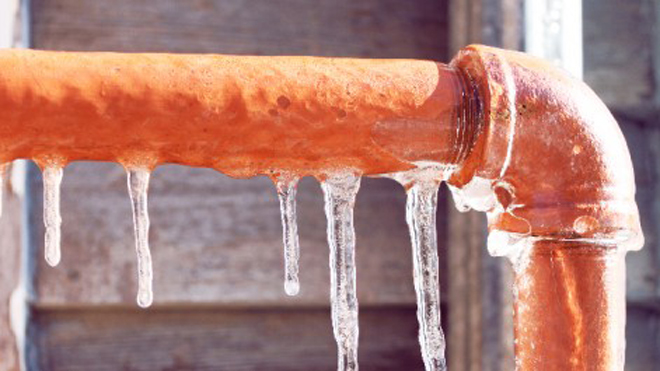Just how do you feel on the subject of Winter Plumbing Precautions: Preventing Frozen Pipes?

Cold weather can wreak havoc on your plumbing, specifically by freezing pipelines. Below's exactly how to avoid it from occurring and what to do if it does.
Introduction
As temperatures drop, the threat of icy pipelines boosts, potentially leading to pricey fixings and water damages. Recognizing how to prevent frozen pipes is vital for home owners in cold climates.
Understanding Frozen Pipes
What causes pipes to ice up?
Pipes ice up when exposed to temperatures below 32 ° F (0 ° C) for extended durations. As water inside the pipelines freezes, it broadens, taxing the pipe walls and possibly triggering them to rupture.
Dangers and damages
Frozen pipelines can bring about water supply disturbances, home damages, and pricey repair work. Ruptured pipelines can flood homes and create substantial structural damages.
Signs of Frozen Piping
Determining icy pipes early can stop them from rupturing.
Just how to identify icy pipelines
Search for lowered water flow from faucets, uncommon smells or noises from pipelines, and noticeable frost on exposed pipes.
Avoidance Tips
Protecting susceptible pipes
Cover pipelines in insulation sleeves or use heat tape to protect them from freezing temperature levels. Focus on pipes in unheated or external areas of the home.
Home heating techniques
Maintain interior rooms appropriately heated up, especially areas with pipes. Open closet doors to enable cozy air to circulate around pipelines under sinks.
Safeguarding Exterior Plumbing
Yard hoses and outside taps
Detach and drain pipes yard hose pipes prior to winter season. Set up frost-proof faucets or cover exterior taps with shielded caps.
What to Do If Your Pipes Freeze
Immediate activities to take
If you think frozen pipes, maintain taps available to soothe stress as the ice melts. Utilize a hairdryer or towels soaked in hot water to thaw pipes gradually.
Long-Term Solutions
Architectural changes
Think about rerouting pipes away from outside wall surfaces or unheated areas. Add added insulation to attic rooms, basements, and crawl spaces.
Updating insulation
Purchase premium insulation for pipes, attic rooms, and walls. Correct insulation assists maintain regular temperatures and lowers the danger of icy pipes.
Verdict
Stopping icy pipes calls for proactive procedures and fast reactions. By recognizing the causes, indications, and safety nets, homeowners can safeguard their pipes throughout cold weather.
5 Ways to Prevent Frozen Pipes
Drain Outdoor Faucets and Disconnect Hoses
First, close the shut-off valve that controls the flow of water in the pipe to your outdoor faucet. Then, head outside to disconnect and drain your hose and open the outdoor faucet to allow the water to completely drain out of the line. Turn off the faucet when done. Finally, head back to the shut-off valve and drain the remaining water inside the pipe into a bucket or container. Additionally, if you have a home irrigation system, you should consider hiring an expert to clear the system of water each year.
Insulate Pipes
One of the best and most cost-effective methods for preventing frozen water pipes is to wrap your pipes with insulation. This is especially important for areas in your home that aren’t exposed to heat, such as an attic. We suggest using foam sleeves, which can typically be found at your local hardware store.
Keep Heat Running at 65
Your pipes are located inside your walls, and the temperature there is much colder than the rest of the house. To prevent your pipes from freezing, The Insurance Information Institute suggests that you keep your home heated to at least 65 degrees, even when traveling. You may want to invest in smart devices that can keep an eye on the temperature in your home while you’re away.
Leave Water Dripping
Moving water — even a small trickle — can prevent ice from forming inside your pipes. When freezing temps are imminent, start a drip of water from all faucets that serve exposed pipes. Leaving a few faucets running will also help relieve pressure inside the pipes and help prevent a rupture if the water inside freezes.
Open Cupboard Doors
Warm your kitchen and bathroom pipes by opening cupboards and vanities. You should also leave your interior doors ajar to help warm air circulate evenly throughout your home.

I am just very fascinated with How to prepare your home plumbing for winter weather and I hope you enjoyed reading the entry. Are you aware of another individual who is truly interested in Helpful Tips to Prevent Frozen Pipes this Winter? Why not promote it. I love reading our article about Helpful Tips to Prevent Frozen Pipes this Winter.
Quote & Schedule